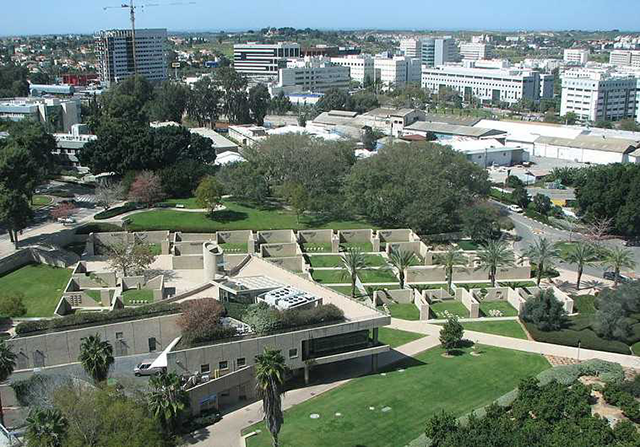Until recently, scientists were not even sure that bacteria had a so-called adaptive immune system.

Weizmann Institute of Science. (photo credit:MICHAEL JACOBSON/WIKIMEDIA COMMONS)
Researchers from the Weizmann Institute of Science and Tel Aviv University have discovered for the first time how the immune system in bacteria manages to recognize the difference between “foreign” and “self” and fight off invasive viruses called phages.
From single cells to humans, the first challenge of any immune system is to detect this key difference, but it’s far from simple – as viruses, bacteria and all other living things are made of DNA and proteins. Their findings were published online recently in the prestigious journal Nature.
“In most environments, phages are around 10 times more abundant than bacteria, and like all viruses, phages use the host cell’s replication machinery to make copies of themselves,” said Prof. Rotem Sorek of Weizmann’s molecular genetics department. “They are constantly evolving new ways to do this, so bacteria need a very active immune system to survive.”
But until recently, scientists were not even sure that bacteria had a so-called adaptive immune system – one that “remembers” a past encounter to produce a targeted response. That changed several years ago when a bacterial adaptive system called CRISPR was discovered. The CRISPR immune mechanism is crucial not only to bacteria, but it has a major impact on daily human lives, as it is used to protect the “good” bacteria that make yogurt and cheese. It may also affect our future, as scientists have figured out how to use the ingenious CRISPR system to “edit” the human genome – making it a handy tool for a wide range of clinical applications.
To remember an infection, the CRISPR system grabs a short sequence from the invading viral DNA and inserts it straight into the bacterial genome. The bits of phage DNA are stored in special sections of the genome; these form the immune memory. In subsequent infections, CRISPR uses these sequences to create short strands of RNA that fit the genetic sequence of the phages’ kin. Protein complexes attached to the RNA then identify the phage DNA and destroy it.
Previous research in Sorek’s lab had shown that mistakenly grabbing bits of self-DNA can cause the bacterial cell to suffer a sort of autoimmune disease in which it attacks its own DNA, possibly with fatal results for the bacteria. With around 100 times more native than foreign DNA in the cell, noted Sorek, there would seem to be room for many more mistakes than researchers have actually observed.
How does the CRISPR system know how to insert foreign rather than native bits of DNA into the immune memory? Sorek and his research student Asaf Levy teamed up with TAU Prof. Udi Qimron and Moran Goren to find out.
They devised an experimental setup using plasmids – short, circular pieces of DNA that mimic viruses – and injected them into bacteria cells. These bacteria had two proteins known as Cas1 and Cas2 – parts of the CRISPR system that are responsible for acquiring the pieces of foreign DNA. The CRISPR system successfully incorporated the plasmid DNA into the bacterial genome, while the native DNA was only rarely attacked. The team recorded some 38 million separate immunization events.
With this, they found that the CRISPR system, using the proteins Cas 1 and 2, specifically identifies DNA that replicates rapidly. Thus, ironically, it is the phage’s survival tactic – its programmed drive to replicate at all costs – that proves to be its downfall.
“Solving the riddle of self versus nonself for the bacterial immune system and deciphering the exact mechanism of this step in the CRISPR process gives us important insight into the unseen confrontation that is taking place everywhere, all around us, all the time,” concluded Sorek.
